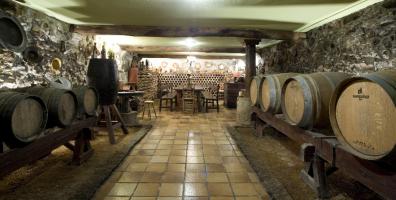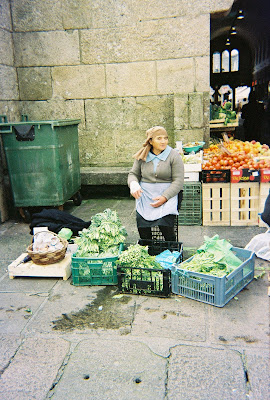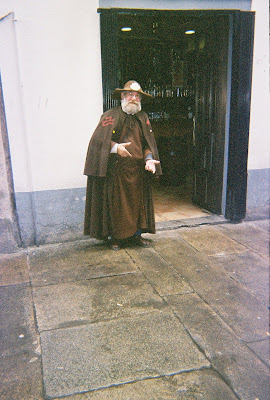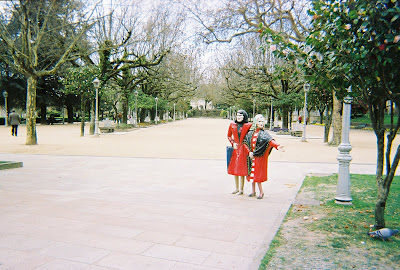Security screening at Madrid’s airport resulted in a two-hour layover and a missed connecting flight to Vigo. When I finally arrived amid a spring deluge, my host was nowhere to be found. A stone’s throw from the Atlantic, the airport was half empty. The silence felt like a heavy cloak as I hurried to the baggage claim area.
My destination was the second annual Tourism Expo in Galicia, Spain. But my only contact was not there to greet me. Tired and hungry, I rummaged through my purse in search of my itinerary. Then I saw that I had scribbled my contact’s phone number at the bottom. I sighed with relief and dialed from my cellphone.
“The taxi was there at 7 pm, but when you didn’t show up, he left,” said Manuel Lage Gomez. I was so grateful to hear his voice that I remained speechless while he explained. “But don’t worry you’re only 20 minutes away, so I’ll send the driver back to pick you up.”
In his heavily-accented English, he apologized for the mix up by suggesting a self-guided tour of Santiago de Compostela. He said my hotel was in the city’s Obradorio square, and the famed cathedral was a few yards away.

“Tomorrow is a free day, so you’re on your own. Your hotel is right on the cathedral square, so you can go visit. The fair does not begin until the following day, and I’ll send our van to pick you up at your hotel at 9 a.m. sharp,” Lage Gomez said.
As the taxi whisked me away, I relished the thought of being on my own for a whole day. Soon enough I’d be one of many writers, tour operators and travel agents discovering the Galicia region in northern Spain. My itinerary did not include Santiago, a city whose 11th century cathedral houses the remains of St. James.
After I checked into Hostal Dos Reis Catolicos, built by King Ferdinand and Queen Isabella as a royal hospital for pilgrims in 1499, a narrow elevator took me to the third floor. Red was the dominant color I saw when the elevator door opened onto a labyrinth-like floor.

The rustic walls, lined with baroque paintings, reinforced the claim that it’s the oldest hotel in the world. Personally, it gave me a foreboding feeling as I trudged along an endless red carpet with my luggage in tow.
The hypnotic hallway forced me to circle the floor twice before I finally found my room. My key weighed as much as a barbell and conjured images of musty dungeons. Settled in, I noted the hardwood floors squeaked continuously until my feet hit a spacious, mosaic-tiled bathroom.
Dos Reis, now a five-star historic parador, hasn’t changed much in 500 years. This luxury hotel, with its iron room keys and red-velvet furnishings, anchors an awe-inspiring medieval cathedral square.
People the world over are drawn here because Santiago is Christianity’s third most sacred site after Rome and Jerusalem. I mulled this fact as I headed downstairs-after circling the floor in search of the elevator-to ask about my dining options.
I was told the cafeteria and full-service bar within, common in Spain, was still open. I was sure that dining on tapas and a glass of local Spanish red wine would make up for all the earlier mishaps.
I walked passed more artwork in the rustic lobby as I entered the cafeteria. Since I was the only customer, the bartender approached me immediately. I was traveling on a shoestring, so I didn’t ask for a glass of Rioja when the bartender asked what I’d like to drink.
“I’m familiar with your Rioja wines, but I’d like to try a wine grown and produced in the Galicia region, because I’ve never been to Galicia,” I told the bartender. He said his name was Javier, and his eyes lit up instantly as if my words had inspired a fervent marketing pitch.
“In the last decade or so, Galicia has emerged as a great wine region. Albariño is our most popular white wine,” he said. I detected notes of melon and green apple in my glass, and I loved the crisp acidity.

Wine and medieval history is fodder for great conversation. His knowledge of both made me wonder why the mild-mannered Dudley Moore look-alike was not a tour guide instead of a bartender.
“Thousands of pilgrims have walked the camino to Santiago (Way of St. James) for centuries. But if you want to see the real Santiago, go to the open market first thing in the morning.”
Before I could ask about red wines, Javier hunched his 5-foot, 8-inch frame over a paper napkin. He began sketching a map of the city, which included details on how to get to San Agustin Plaza.
“The open market takes place only on Thursdays, so it’s important to be at the plaza before noon tomorrow. This may be your only chance to see the real Santiago,” Javier reiterated.

“The Galician people bring all their fruits and vegetables to this plaza, so you will get a good idea of who the real people of Galicia are. Their heritage is Celtic, which means they are earthy, rugged folks who hold on to their traditions,” he said.
Javier placed a bowl of anchovy-stuffed Spanish olives in front of me. He also noticed I was ready for more wine. This time he poured me Galicia’s red Mencia wine. As soon as it hit my palate, I tasted notes similar to pinot noir.
“If you go to El Gato Negro, you can try wines from Galicia served in a traditional white, ceramic cup. This café and pub is on what used to be called the “street of wines,” but now the street has many cafes and restaurants. But in my opinion, this pub remains the most authentic of them all,” Javier said.
“It also serves local wines from oak wooden barrels. You can try several wines from Galicia’s Rias Baixas wine region. You can enjoy these wines for less than $2 euros a glass,” he added.
Galicia is also known for its empanadas, which are made daily. The bite-size turnovers are filled with tuna from the nearby Atlantic and pimenton, a non-spicy red pepper. Gato Negro, “black cat” in Spanish, is one of many cafes and pubs offering the Galician favorite.
Armed with this wealth of information, I drained my glass and said goodnight. I tucked the map in my purse and headed up to my room. I made sure to ask the receptionist for a wake-up call.
I emerged from the hotel the next morning, and the first sounds I heard were bagpipe music. Is this Ireland? Sheltered from a damp wind by my raincoat, I hurried away from the hotel toward a stone archway.

The bagpipes got louder as I approached a musician playing in the shadow of a granite entry. Donned in full Celtic regalia, he played while passers-by stopped to listen. The traditional Galicia music was beguiling. Although the bagpiper didn’t stop playing when I took snapshots, I could see he didn’t like being photographed. Still, after I tossed a euro into his case, he posed for a full-sized photo.
My knees weakened as I climbed steep streets with map in hand. I knew I’d reached the plaza when I saw an old woman sporting a black scarf. She stood guard over lettuce-filled wicker baskets. I tried to snap a photo, but she raised her wrinkled hands in protest. I reacted to her gesture, not to her indiscernible language.
In fact, except for a farmer hawking Galicia’s famed “tetilla” cheese, most shun cameras. And most will let you know in Gallego. A mix of Spanish and Portuguese, Gallego is spoken by more than 80 percent of Galicia’s population. I didn’t need a translator to understand they were camera shy. I opted to keep exploring and looking for the “street of wines” within the city.
A cliché says it’s the journey not the destination. My journey was enriched by Zapatones, a local pilgrim donned in a long, brown robe and carrying a staff. He wore a felt hat with a scallop seashell, a symbol of St. James.

The nickname means “large shoes” in Spanish, but it was his wardrobe not his shoes that held sway. For a euro, Zapatones posed for pictures. Years ago, after his first pilgrim’s walk to Santiago; he decided his destiny was to keep the spirit of ancient pilgrims alive. After the brief explanation, he told me to forge ahead.
I saw a Black Cat above a pub door a few yards away and knew I had arrived. Confident I had found the right place, I went in and asked for the white and red wine Javier had served me. Both arrived in a typical Galician white cup. Both had been dispensed from oak barrels. I indulged in seafood tapas, but saved the tasty empanada for last. The grazing fueled my desire to push deeper into the city.
It was now sunset, so I hurried across town to Alameda Park, where the University of Santiago has its south campus. That’s where I spotted “Las Dos Marias” unheralded tourist attraction.

Legend holds that the two sisters went in search of a husband each evening for years. Neither one ever found a husband, but the city immortalized them with statutes at the entrance of Alameda Park.
I returned to the hotel at the same time I had checked in the day before. I rushed through the lobby to the bar anxious to thank Javier. But I was told he was on vacation. The next morning, I told the van driver about what a great free day I had thanks to Javier.
“He’s my friend and he’s worked at the hotel for 37 years. In fact, he studied to be a tour guide. But he changed his mind after failing a state-mandated history exam,” he said.
As I reflected on my adventure, there was no question in my mind that Javier had missed his true calling.
Rosie Carbo is the Lifestyles Editor for Wandering Educators
All photos courtesy and copyright Rosie Carbo
